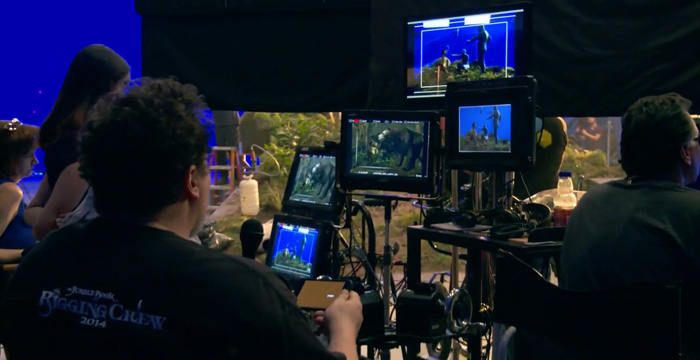It’s been almost three weeks in India and around two weeks in the US that Disney’s The Jungle Book released and yet the fervour is still alive both at the box office and among the common audience as well. Audiences of diverse cultures have turned their foot back to the theatres to watch this live action animation again and again to dive deep into the dense jungle with the little Mowgli and his wild beasts gang.
The recent increasing box office numbers show that the film is being watched by audiences across the globe and thus has worked its magic on them. However, the audiences who have witnessed this extravaganza are all left with one single question- How was such a film made? How is it possible for a real boy to talk, interact and act with live animals and also react effectively?
To answer this curiosity, Disney recently published a ‘Making of The Jungle Book’ video where the mastermind director John Favreau himself speaks about the thought process and technical aspects of the film.
“Because we had decided to use this completely virtual environment approach, we figured it’s an opportunity to take the best of the animation process and the best of motion capture and the best of live action — you combine those things and you can do something nobody’s done before.” Favreau exclaims in the video.
In all this collaboration of animation, VFX and live action, the lead character Neel Sethi had a challenging task as he had to act and react to things that were not present at all. But, the VFX studios MPC and Weta digital along with the production team of Disney made it possible as puppets, humans and props were replaced by animals and dense backgrounds in the final film.
Creating animals using animation was a task profusely achieved by the team but making the animals talk and emote in a believable manner was another mission to be accomplished. The voice cast played a huge role to fit the character animation and make the whole film look realistic. The video does not give an in depth information about the creativity and technology of filmmaking but provides an overview of what kind of effort was done to create this feature.
Favreau owes everything to technology and mastermind manpower as this film was possible only because of these two factors. Well, nobody could imagine that a Rudyard Kipling’s jungle could be summarised in an enclosed room and yet told on the big screen displaying the vast forest.


